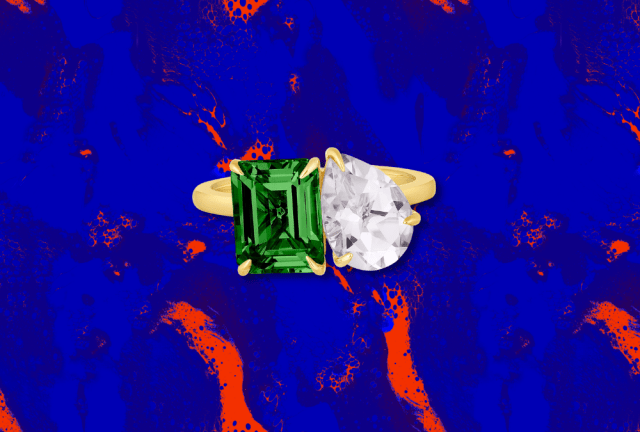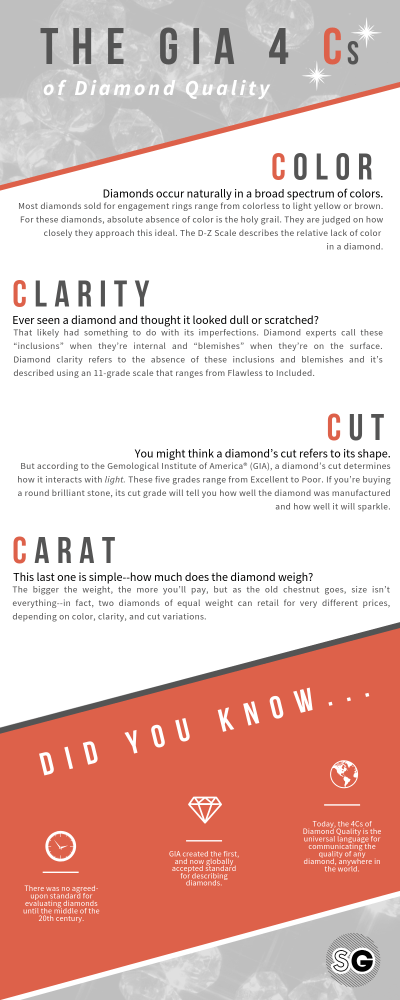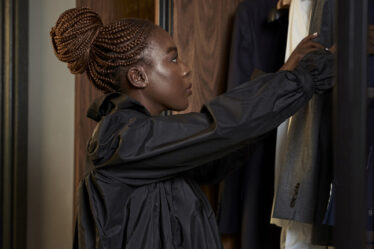
So you’ve found the single-most perfect person on the planet who you have decided that you absolutely must marry. You’ve saved up some money to buy an engagement ring and you’re planning how you’ll pop the question.
First thing’s first—congratulations! Love is wonderful! Finding “your person” can be a real journey. Etc. etc.
Now, onto the nitty-gritty of buying that diamond.
Plunking down your hard-earned paycheck on an engagement ring is a lot like buying a car or a house—it’s one of the biggest purchases of your life, so it requires research and planning.
You may think you can do this all on your own, but hello, it’s 2019! It’s totally cool for guys to ask for directions, whether you’re on the road, or on the road to marriage.
Here’s the good news: Team SG is here with a map!
As anyone who’s made a big purchase in the digital age knows, help isn’t in short supply these days—in fact, the sheer volume of do’s and don’ts available online can leave your head spinning.
As you wade into the weeds of engagement ring-buying, it can be easy to go down a spiral of Reddit threads and big box retailer reviews.
So, we’ve put together the definitive primer on how to spot a good diamond (if that’s the type of gem you want!), and some inside intel on the document you’ll want to get when you make that monumental purchase.
What to know when engagement ring shopping:
Get familiar with the 4C’s
If you haven’t heard of the 4Cs of diamond quality, don’t worry—we get that you’re new at this.
As laid out by the Gemological Institute of America, the leading authority on diamond knowledge, the 4Cs form an international benchmark by which diamonds can be evaluated and described.
Those 4Cs are:
- Color
- Clarity
- Cut, and
- Carat Weight
Here’s what you need to know about each of them:

Color
Diamonds occur naturally in a broad spectrum of colors, but most diamonds sold for engagement rings range from colorless to light yellow or brown.
For these diamonds, absolute absence of color is the holy grail. They are judged on how closely they approach this ideal. The GIA D-to-Z scale describes the relative lack of color in a diamond.
RELATED: How to pick an engagement ring
Bottom line: The more colorless the diamond, the higher its quality, according to the 4Cs.
Clarity
Ever seen a diamond and thought it looked dull or scratched? That likely had something to do with what some people might call flaws or imperfections. Diamond experts call these “inclusions” when they’re internal and “blemishes” when they’re on the surface.
Diamond clarity refers to the absence of these inclusions and blemishes and it’s described using an 11-grade scale that ranges from Flawless to Included.
Bottom line: Look for a diamond in your price range without visible inclusions, but that doesn’t mean it has to be flawless.
Cut
You might think a diamond’s cut refers to its shape (round, princess, oval, etc.), but not so fast—that isn’t true! Confusing, right? Just when you thought you knew it all. Patience, future fiancé-san.
According to GIA, a diamond’s cut quality is all about how well the diamond interacts with light. This has to do with the symmetry of its facets, the diamond’s overall proportions, and its design and workmanship.
GIA’s five grades range from Excellent to Poor. If you’re buying a round brilliant stone, its cut grade will tell you how well the diamond was manufactured and how well it will sparkle.
Bottom line: If you’re going for sparkle, look for a diamond with a cut grade of Very Good or Excellent.
Carat Weight
This last one is simple—how much does the diamond weigh?
Most people think the more it weighs, the more you’ll pay, but as the old chestnut goes, size isn’t everything.
In fact, two diamonds of equal weight can retail for very different prices, depending on their color, clarity, and cut grades. Crazy, we know!
There’s no need to go broke on an engagement ring—just spend what’s right for you and keep her taste in mind, because many women don’t want a giant rock, even if you can afford one.
Bottom line: Size (sorry, Carat Weight) isn’t the whole story, but it’s good to know the numbers on what exactly you’re buying.
How to Make Sure Your Diamond is Legit
Now that you know what to look for in a diamond, you might think your work here is done, but not so fast, mister (yep, again).
Jewelers come in all shapes and sizes, from independent mom and pop shops, to big box chain stores. Wherever you decide to ultimately pull your wallet out of your back pocket, a Diamond Grading Report is a way to make sure you’re getting the full story about your diamond.
So, before you spring for what might seem like the perfect diamond, ask your jeweler for its GIA Diamond Grading Report.
You might think this report has something to do with insurance, but it doesn’t measure what a diamond is worth—rather, it lays out a blueprint of a diamond’s quality and characteristics.
Think of it like a report card for a diamond when engagement ring shopping.

Here’s why you absolutely need one:
…It’s Unbiased
A GIA report is an accurate, unbiased document that lays out the facts about your diamond, including a diagram of any inclusions it may have and an expert analysis of its 4Cs. Meaning it’s a useful independent way to verify a diamond’s quality.
It will confirm that your diamond is the real deal, no matter where you decide to buy.
…It’s Easy to Get
If you’re shopping with a retailer that doesn’t already have a GIA report in hand, many retailers will work with you to get your diamond graded.
Why not have all the facts when it’s so easy to get them, especially when you’re about to drop serious money?
…It’s Secure
A report comes with built-in security features like a hologram (high tech, right?), so you can rest assured it hasn’t been forged or duplicated.
***
We get it—you’re about to make not only one of the biggest purchases of your life, but also one of the biggest commitments. It can be a stressful, expensive time, but you’re on the right path, we promise.
And just think. Once you get through this part—and get the ”Yes” you’re hoping for!—all those lower stakes wedding decisions, like napkins and centerpieces, will feel like child’s play.
So chin up, man. You got this.



